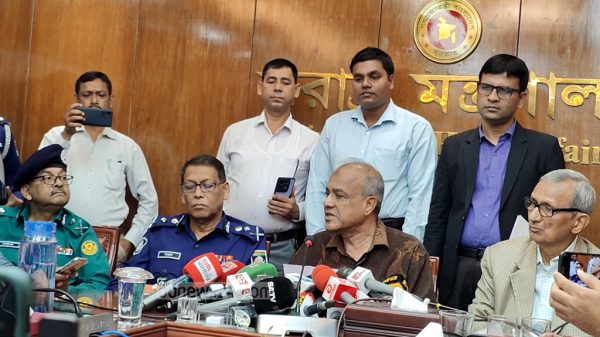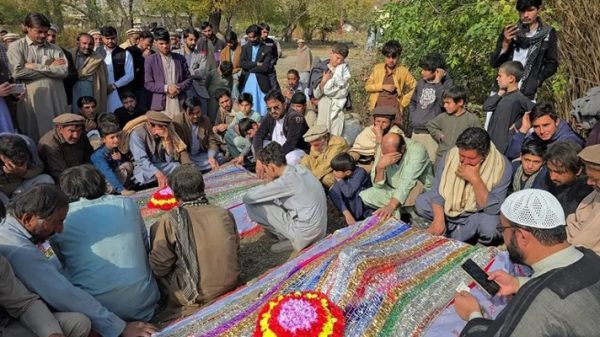Move to fell century-old trees at Ctg’s CRB, Tiger Pass sparks concerns

- Update Time : Monday, 1 April, 2024, 01:03 pm
- 70 Time View

Online Desk: Environmentalists and residents have raised serious concern over a recent move by Chittagong Development Authority (CDA) to cut 46 century-old trees and hill slopes from Tiger Pass to CRB area for the contraction of a ramp of the elevated expressway.
Earlier in 2022, the government bid to construct a private hospital in CRB area was halted amid strong movement of the port city residents and green activists.
The CRB area, that takes its name from the Central Railway Building – built by the British colonial administration in 1872 as the headquarters of the Assam-Bengal Railway – is a scenic, hilly quarter of the Port City known for its Shireesh trees (Albizia Lebeck) Surrounded by centuries-old trees, hills, hills and valleys, this area is home to a variety of species of birds and animals.
Chattogram residents celebrate the Bengali New Year on April 14 every year on an open stage called “Shireeshtala” at CRB area. CRB also hosts the famed “Boli Khela”, an annual freehand wrestling challenge that draws competitors from far and wide.
Environmentalists and civil society members fear that felling of trees and destruction of hills will cause environmental disaster.
Sources said CDA has already applied to the Forest Department and Bangladesh Railway for permission to fell trees and the trees that will be cut have already been marked.
Meanwhile, environmentalists and civil society representatives have called the decision “irresponsible” and requested the CDA to find an alternative plan for the construction of the ramp.
Ritu Parvin, an official of green organisation Environmental Movement Green Fingers Bangladesh, said, “CRB is marked as a heritage area. Bangladesh Railway wanted to build a hospital there, but the railway authority backed tracked due to people’s agitation. No construction will be allowed in the CRB area and its surrounding areas which will destroy the environment. We will also stage protest. Already we have announced the sit-in programme at CRB on Monday.”
According to the Bangladesh Railway, the Tiger Pass road was built on the hill slope to connect CRB and polo ground with the port area of Chittagong during the British period.
It is known as a double decker road to locals. The slope of the hill has been kept as a divider of this road. Hundreds of small and big trees were planted in the road division. Some trees are over 100 years old which are abode of many birds.
The construction of the 16 km long elevated expressway from Lalkhan Bazar to the airport at a cost of Tk 4,298 crore is in the final stage. Prime Minister Sheikh Hasina inaugurated the expressway in November last year. But it has not yet been opened to traffic. The duration of the project has been extended till June 2024 as the work could not be completed on time.
Journalist Mohsin Kazi, Joint Secretary General of Civil Society Chittagong, said that CDA must consider an alternative to build ramps instead of cutting trees by damaging the environment. “If any government organisation tries to cut the trees we will again start movement.”
According to CDA officials, among the 14 ramps of the expressway, one will be constructed at GEC junction, two at Tiger Pass, four at Agrabad, one at Fakirhat, two at Nimtala, two at CEPZ and two at KEPZ.
One of the two ramps at the Tiger Pass intersection will be on the New Market-bound road via CRB, while the other will be on the Ambagan-bound road. CDA sent a letter to the Bangladesh Railway on March 25 seeking permission to use 14 decimal land for its construction.
Kazi Hasan bin Shams, Chief Engineer of CDA, said that the ramp will be constructed in the CRB area with utmost importance to the environment.
“It will not have any impact on the environment if the trees are cut to build the ramp. While 46 trees are planned to be cut for the construction of the ramp, more trees will be planted. The ramp will be constructed in the national interest without damaging the double-decker road on the hill slopes.”
Md. Sujan, chief estate officer of Railway Eastern Zone said, CDA has sought permission to use the land. “We have a seven-member departmental committee which will visit the area before approval. How much land is there, how many trees are there, whether the trees will be cut – the departmental committee will check all the issues and give a report. Then it will be sent to headquarters for approval.”










